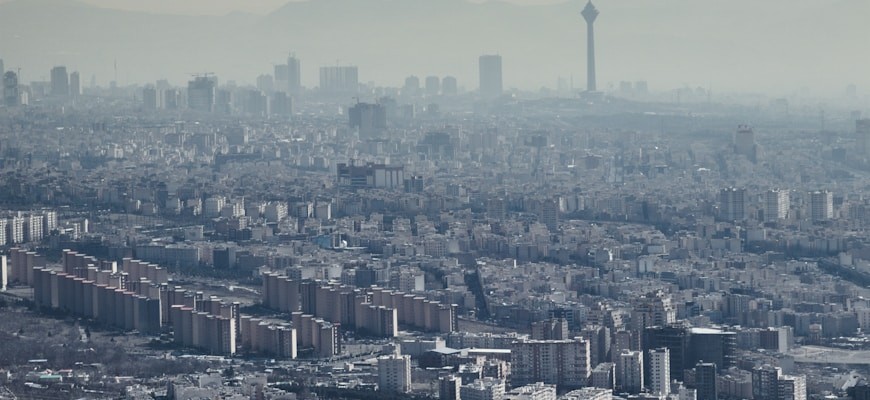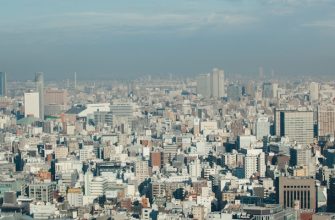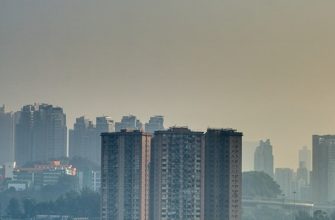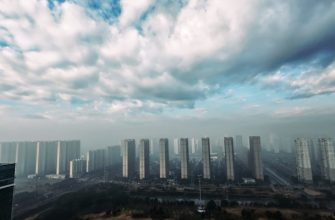- Envisioning Green Cities: Pathways to Cleaner Air
- Urban Transformation: The Role of Green Spaces in Air Quality Improvement
- Sustainable Solutions: How Eco-Friendly Urban Planning Can Combat Pollution
- The Benefits of Green Infrastructure: Enhancing Air Quality in Urban Areas
- From Gray to Green: The Impact of Urban Reforestation on Air Health
- Cleaner Air for All: The Future of Sustainable Urban Living
Envisioning Green Cities: Pathways to Cleaner Air
Green cities represent a transformative vision for urban environments, focusing on sustainability and air quality improvement. The integration of nature into urban planning not only creates aesthetically pleasing spaces but also plays a crucial role in enhancing air purity. By adopting eco-friendly practices, cities can effectively reduce pollution levels, leading to cleaner air for residents.
- Urban greenery, such as parks and green roofs, acts as natural air filters, absorbing harmful pollutants and releasing oxygen.
- Implementing efficient public transportation systems reduces the number of vehicles on the road, thereby lessening emissions and improving air quality.
- Encouraging the use of electric vehicles and bicycles contributes to lower carbon footprints in urban areas.
- Community gardens not only provide fresh produce but also help absorb CO2, further purifying the air.
- Smart waste management systems can minimize landfill emissions, reducing the overall pollution burden on urban air.
By prioritizing these initiatives, cities can pave the way toward a more sustainable future. Investing in green infrastructure not only benefits the environment but also enhances public health by mitigating respiratory issues linked to poor air quality. The collective effort to develop green cities represents a significant step toward achieving cleaner air, fostering a healthier urban lifestyle.
Ultimately, envisioning green cities involves a multifaceted approach to air quality improvement. Collaboration among governments, businesses, and communities is essential to implement these strategies effectively. Through education and awareness, urban populations can engage in practices that contribute to the overall goal of cleaner air and a more sustainable environment.
Urban Transformation: The Role of Green Spaces in Air Quality Improvement
Urban transformation plays a crucial role in enhancing air quality, with green spaces emerging as vital components in this process. Green cities, characterized by parks, gardens, and urban forests, contribute significantly to the reduction of air pollution. These green environments act as natural air filters, absorbing harmful pollutants and releasing oxygen, thus improving the overall air quality in urban settings.
The integration of green spaces in urban planning fosters a healthier ecosystem. Plants in these areas not only sequester carbon dioxide but also filter particulate matter and other toxins from the air. Moreover, the presence of greenery helps to mitigate the effects of urban heat islands, leading to cooler temperatures and lower energy consumption, which further aids in reducing air pollution.
- Enhanced Biodiversity: Green spaces support diverse plant and animal species, contributing to ecological balance.
- Improved Mental Health: Access to nature has been linked to better mental well-being, reducing stress and promoting physical activity.
- Community Engagement: Parks and green areas serve as gathering spots, fostering community involvement and environmental stewardship.
- Climate Resilience: Green infrastructure helps cities adapt to climate change, reducing vulnerability to extreme weather events.
The positive impact of green spaces on urban air quality cannot be overstated. Cities that prioritize the creation and maintenance of parks and green belts witness a marked improvement in air cleanliness. As more urban areas embrace this transformation, the collective benefits will lead to healthier populations and a more sustainable future.
Sustainable Solutions: How Eco-Friendly Urban Planning Can Combat Pollution
Eco-friendly urban planning is a vital approach to addressing pollution in modern cities. By integrating sustainable solutions into city design, municipalities can significantly enhance air quality and create healthier living environments. Sustainable urban planning focuses on reducing emissions, promoting green spaces, and improving public transportation systems.
- Green Spaces: The incorporation of parks, gardens, and green roofs plays a crucial role in purifying the air. Plants naturally absorb carbon dioxide and release oxygen, contributing to cleaner air.
- Renewable Energy: Utilizing solar, wind, and other renewable energy sources in urban infrastructure helps reduce reliance on fossil fuels, thus lowering pollution levels.
- Efficient Public Transport: Developing reliable public transportation options can decrease the number of vehicles on the road, leading to reduced emissions and improved air quality.
- Sustainable Building Practices: Implementing energy-efficient designs and materials in construction minimizes energy consumption and waste, which in turn lessens environmental impact.
The benefits of eco-friendly urban planning extend beyond air quality. It fosters a sense of community, encourages active lifestyles, and enhances the overall aesthetic of cities. As urban areas continue to grow, the importance of sustainable solutions becomes increasingly apparent. Implementing these strategies can lead to a brighter, healthier future for all urban residents. Cities that prioritize sustainable practices not only combat pollution but also promote long-term environmental stewardship.
The Benefits of Green Infrastructure: Enhancing Air Quality in Urban Areas
Green infrastructure plays a crucial role in enhancing air quality in urban areas. By integrating nature into city planning, urban environments can significantly reduce air pollution and improve the overall health of residents. This innovative approach not only addresses the immediate challenges of air quality but also contributes to long-term sustainability.
- Air Filtration: Vegetation, such as trees and shrubs, acts as natural air filters. They absorb carbon dioxide and other harmful pollutants, releasing oxygen in return. This process enhances air quality and promotes a healthier atmosphere.
- Temperature Regulation: Green spaces help cool urban areas, which can mitigate the urban heat island effect. Lower temperatures can reduce the formation of ground-level ozone, a harmful air pollutant.
- Noise Reduction: Green infrastructure can also serve as a sound barrier, reducing noise pollution. This indirectly contributes to better air quality by encouraging outdoor activities and reducing reliance on motorized transport.
- Stormwater Management: Effective management of stormwater through green roofs and permeable pavements can prevent pollutants from entering waterways. Cleaner runoff leads to better air quality as fewer toxins are released into the environment.
- Community Engagement: Green spaces foster community interaction and involvement. Engaged communities are more likely to advocate for environmentally friendly practices that contribute to improved air quality.
Incorporating green infrastructure in urban planning not only benefits the environment but also enhances air quality, leading to healthier and more livable cities. The integration of parks, green roofs, and urban forests is essential for creating sustainable urban ecosystems. By prioritizing green initiatives, cities can pave the way for a brighter, healthier future.
From Gray to Green: The Impact of Urban Reforestation on Air Health
Urban reforestation plays a crucial role in transforming cities from gray to green, significantly enhancing air quality and overall environmental health. By introducing more trees and green spaces, urban areas can better filter pollutants and improve the well-being of residents.
- Improved Air Quality: Trees absorb carbon dioxide and release oxygen, contributing to cleaner air and reducing the concentration of harmful pollutants.
- Reduction of Urban Heat: Green spaces help cool urban environments, mitigating the heat island effect and further improving air health.
- Enhanced Biodiversity: Reforestation efforts create habitats for various species, promoting biodiversity that is essential for ecological balance.
- Psychological Benefits: Access to green areas has been linked to reduced stress and improved mental health, which indirectly contributes to better respiratory health.
Furthermore, urban reforestation initiatives often lead to community engagement, fostering a sense of ownership and responsibility among residents towards their environment. This collective effort not only strengthens community bonds but also enhances the effectiveness of sustainability practices.
In conclusion, the transformation of urban landscapes through reforestation is a powerful strategy for enhancing air quality. By prioritizing green initiatives, cities can create healthier living environments, ultimately benefiting both residents and the planet.
Cleaner Air for All: The Future of Sustainable Urban Living
In an increasingly urbanized world, the quest for cleaner air has become paramount. Sustainable urban living is at the forefront of this movement, aiming to create green cities that prioritize environmental health. Cleaner air is not just a luxury; it is a necessity for the well-being of city dwellers. The future of urban living lies in integrating nature into urban landscapes, thereby significantly improving air quality.
Green cities utilize a variety of strategies to enhance air quality, including:
- Increasing green spaces: Parks, gardens, and urban forests play a crucial role in filtering pollutants and producing oxygen.
- Promoting public transportation: Efficient and eco-friendly transport options reduce reliance on personal vehicles, leading to lower emissions.
- Implementing green building designs: Structures that incorporate energy-efficient materials and technologies contribute to a decrease in air pollution.
- Encouraging renewable energy sources: Solar panels, wind turbines, and other renewable technologies help reduce the carbon footprint of urban areas.
Research indicates that cities designed with sustainability in mind show a marked decrease in air contaminants. This shift not only benefits public health but also enhances the quality of life for residents. Cleaner air in urban environments fosters a healthier population and creates vibrant communities where people can thrive.
Furthermore, community engagement plays a vital role in the transition to greener cities. Residents who are actively involved in sustainability initiatives tend to advocate for policies that promote cleaner air and environmental stewardship. By fostering a culture of environmental awareness, urban centers can ensure that future generations inherit a healthier planet.
As the concept of sustainable urban living continues to evolve, the emphasis on cleaner air will remain a cornerstone. Strategic urban planning that prioritizes air quality will shape the cities of tomorrow, creating environments where both nature and humanity can flourish in harmony.








